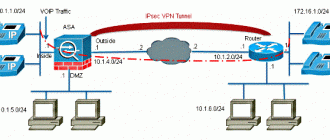Basically, QoS comprises the mechanisms that give network managers the ability to control the mix of bandwidth, delay, variances in delay (jitter), and packet loss in the network in order to deliver a network service such as voice over IP; define different service-level agreements (SLAs) for divisions, applications, or organizations; or simply prioritize traffic across a WAN.
QoS provides the ability to prioritize traffic and allocate resources across the network to ensure the delivery of mission-critical applications, especially in heavily loaded environments. Traffic is usually prioritized according to protocol.
So what does this really mean…

An analogy is the carpool lane on the highway. For business applications, we want to give high priority to mission-critical applications. All other traffic can receive equal treatment.
Mission-critical applications are given the right of way at all times. Multimedia applications take a lower priority. Bandwidth-consuming applications, such as file transfers, can receive an even lower priority.
What Is Driving the Need for QoS?
There are two broad application areas that are driving the need for QoS in the network:
– Mission-critical applications need QoS to ensure delivery and that their traffic is not impacted by misbehaving applications using the network.
– Real-time applications such as multimedia and voice need QoS to guarantee bandwidth and minimize jitter. This ensures the stability and reliability of existing applications when new applications are added.
Voice and data convergence is the first compelling application requiring delay-sensitive traffic handling on the data network. The move to save costs and add new features by converging the voice and data networks–using voice over IP, VoFR, or VoATM–has a number of implications for network management:
– Users will expect the combined voice and data network to be as reliable as the voice network: 99.999% availability
– To even approach such a level of reliability requires a sophisticated management capability; policies come into play again
So what are mission critical applications?
Enterprise Resource Planning (ERP) applications
- – Order entry
- – Finance
- – Manufacturing
- – Human resources
- – Supply-chain management
- – Sales-force automation
What else is mission critical?
- – SNA applications
- – Selected physical ports
- – Selected hosts/clients
QoS Benefits
QoS provides tremendous benefits. It allows network managers to understand and control which resources are being used by application, users, and departments.
It ensures the WAN is being used efficiently by the mission-critical applications and that other applications get “fair” service, but take a back seat to mission-critical traffic.
It also provides an infrastructure that delivers the service levels needed by new mission-critical applications, and lays the foundation for the “rich media” applications of today and tomorrow.
Where Is QoS Important?
QoS is required wherever there is congestion. QoS has been a critical requirement for the WAN for years. Bandwidth, delay, and delay variation requirements are at a premium in the wide area.
LAN QoS requirements are emerging with the increased reliance on mission critical applications and the growing popularity of voice over LAN and WAN.

The importance of end-to-end QoS is increasing due to the rapid growth of intranets and extranet applications that have placed increased demands on the entire network.
QoS Example

Hopefully this Image provides a little context. It demonstrates a real example of how QoS could be used to manage network applications.

